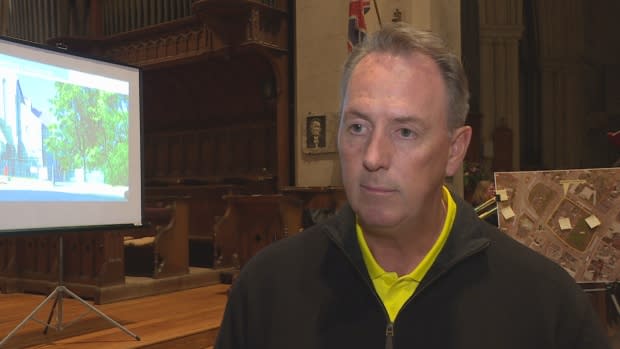Anglican Diocese withdraws proposal for annex to Cathedral of St. John the Baptist
A controversial extension on the Anglican Cathedral of St. John the Baptist has been withdrawn from St. John's city council, just hours before council was set to vote on the matter.
In the agenda for Monday's council meeting, city staff recommended council refuse the proposed design of the annex extension based on concerns from the public.
Paul Antle, chair of the church's project, told CBC News they withdrew the application once they became aware of that recommendation.
"It was an indicator to us that more work needs to be done," said Antle. "We want to cover off all the concerns [and] make the city comfortable."
He said the church will "take a step back to work comfortably with the stakeholders."

Proposed plans for the annex on the historic Anglican cathedral were met with criticism from residents and generated plenty of public debate.
Antle has said the extension, which would house offices, a new resource centre, and a small café, was required in order to better serve the community.
Council was originally set to vote on the addition at an Aug. 5 meeting, but the vote was deferred when Anglican officials requested more time to review the proposal.
Concerns over buried bodies
Church records show more than 4,500 people have been buried in the walled green space between the Anglican cathedral and Duckworth Street.
People concerned about the construction worried there were bodies still buried in the ground where the planned extension would be built.
The committee overseeing the proposed project has said exploratory holes were dug around the proposed construction site and no human remains were found, but if any were, they would be handled appropriately.
Staff made several recommendations, taking into consideration issues raised by members of the public at an information session on the proposal.
If the church decides to proceed with a revised design on the same proposed footprint, staff said the city should allow excavation work around the foundation to see if human remains are indeed located under the building site — and come up with a different site if remains are found. They also recommended the city "explore opportunities with other partners" to find out where human remains are located in the rest of the churchyard.
A local historian previously expressed concerns over digging up the site, estimating that as many as 20,000 bodies have been buried in the churchyard since the 17th century.
Gerald Penney, the archeologist whose firm examined the site, said they dug test pits and didn't find human remains.
Read more from CBC Newfoundland and Labrador

